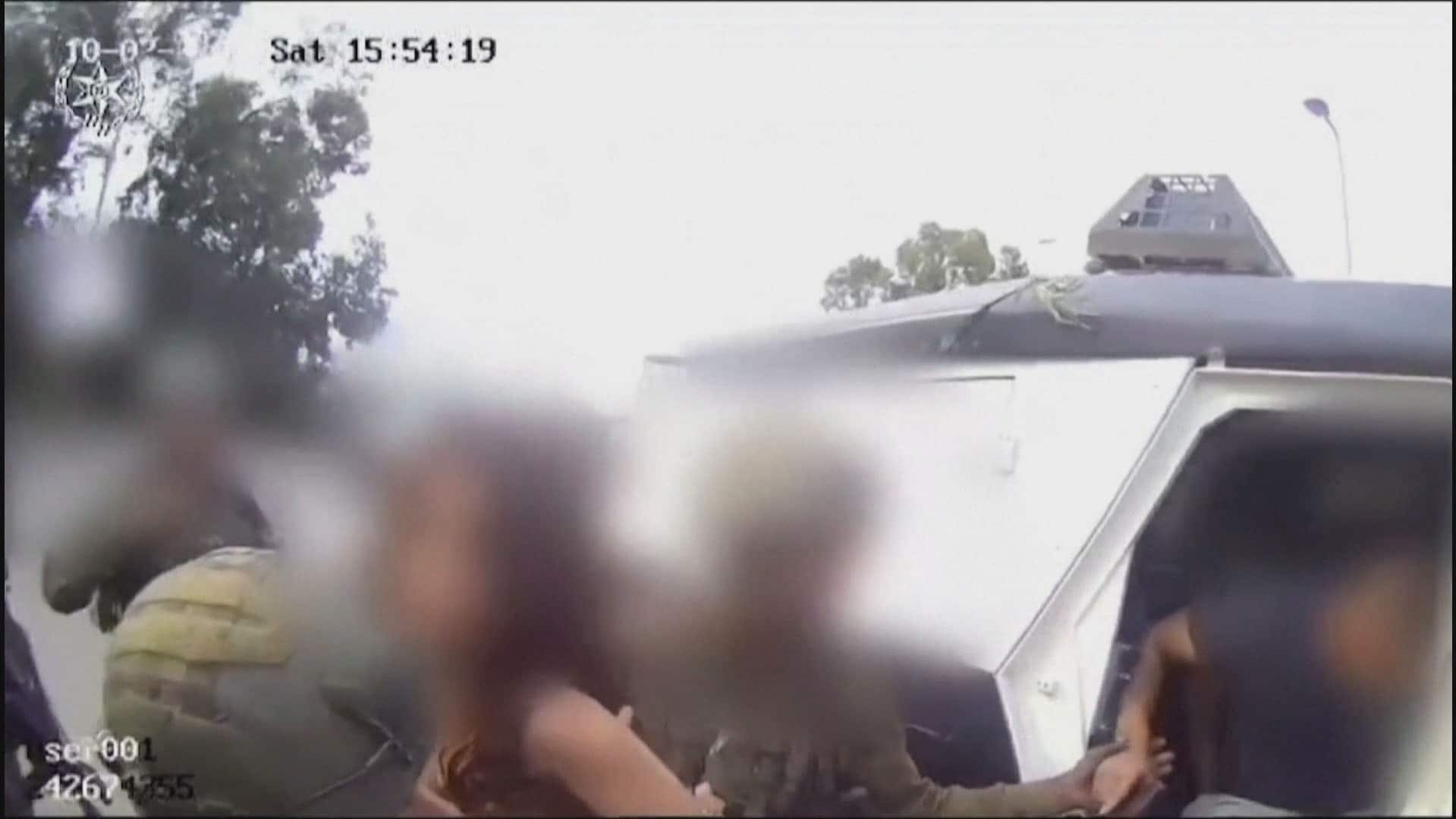Improving Cross-Border Crime Fighting Strategies: A Comprehensive Approach

Table of Contents
Enhanced International Cooperation
Effective cross-border crime fighting hinges on robust international cooperation. This requires a concerted effort to overcome jurisdictional limitations and foster trust among nations.
Strengthening Bilateral and Multilateral Agreements
Establishing clear legal frameworks is paramount. This involves:
- Strengthening extradition treaties: These agreements facilitate the transfer of suspects and criminals across borders for prosecution. Examples include the European Arrest Warrant and similar bilateral treaties between countries. These agreements must be updated regularly to address emerging forms of crime.
- Improving asset recovery mechanisms: Confiscation and repatriation of assets obtained through transnational crime are crucial for disrupting criminal organizations. International agreements are needed to streamline this process. The UN Convention against Corruption provides a framework but needs stronger enforcement.
- Facilitating information exchange: Secure and reliable channels for sharing intelligence and evidence are vital. This requires addressing data protection concerns while ensuring timely access to critical information. The establishment of joint investigative teams can significantly enhance this exchange.
Examples of Successful Collaborations:
- The success of Interpol: Interpol's global network facilitates international police cooperation, significantly impacting transnational crime investigations.
- Joint efforts against drug trafficking: International collaborations, such as those involving the DEA and other agencies, have significantly disrupted major drug trafficking organizations.
- Combating human trafficking: International cooperation, through initiatives like the UN Global Initiative to Fight Human Trafficking, is vital for rescuing victims and prosecuting traffickers.
Fostering Trust and Transparency Between Law Enforcement Agencies
Building trust between law enforcement agencies is fundamental for effective cross-border crime fighting. This requires:
- Establishing secure communication channels: Encrypted communication systems are necessary to protect sensitive information during investigations.
- Developing standardized training programs: Unified training programs ensure consistent investigative practices and facilitate seamless collaboration.
- Addressing jurisdictional complexities: Clear protocols for resolving jurisdictional disputes and allocating responsibilities are essential for efficient investigations.
Challenges and Solutions:
- Challenge: Differing legal systems and standards can create obstacles to information sharing.
- Solution: Developing harmonized legal frameworks and standardized procedures can mitigate this challenge.
- Challenge: Language barriers can impede effective communication.
- Solution: Investing in translation and interpretation services is vital.
Leveraging Advanced Technology
Technology plays a crucial role in enhancing cross-border crime fighting capabilities. This involves utilizing both established and emerging technologies to improve efficiency and effectiveness.
Utilizing Data Analytics and Predictive Policing
Big data analysis and predictive policing techniques are transforming law enforcement. This includes:
- Identifying crime patterns: Analyzing large datasets to reveal cross-border crime trends and networks.
- Predicting potential threats: Utilizing algorithms to anticipate future criminal activity and deploy resources proactively.
- Disrupting criminal networks: Employing AI and machine learning to identify and target key players within transnational criminal organizations.
Examples of Successful Technology Implementation:
- Predictive policing software: Many police forces are now using software to predict crime hotspots.
- Financial crime detection systems: These systems are used to identify suspicious financial transactions across borders.
- Social media monitoring tools: These tools are used to track the activities of criminals online.
Implementing Advanced Surveillance and Tracking Technologies
Advanced surveillance technologies can aid in apprehending criminals and disrupting their operations, but ethical considerations are vital:
- GPS tracking: Tracking devices can be used to monitor the movement of suspects and illicit goods.
- Facial recognition: This technology can help identify suspects and link them to criminal activities.
- Cybersecurity tools: These are crucial in combating cybercrime and protecting critical infrastructure.
Balancing Security and Privacy:
- Data protection laws: Strict regulations are necessary to protect individual privacy rights while leveraging the benefits of surveillance technology.
- Transparency and accountability: Clear guidelines are needed to ensure responsible use of surveillance technologies.
Improving Data Sharing and Information Exchange
Efficient and secure data sharing is crucial for effective cross-border crime fighting. This requires improvements in both infrastructure and processes.
Establishing Secure and Interoperable Data Platforms
Building secure and interoperable platforms is essential for effective data sharing:
- Secure data platforms: These platforms must protect sensitive information from unauthorized access.
- Standardized data formats: Uniform data formats enable seamless information exchange between agencies.
- Data encryption and access control: Strong encryption and robust access control mechanisms are vital for data security.
Importance of Data Security:
- Preventing data breaches: Robust security measures are critical to prevent sensitive information from falling into the wrong hands.
- Maintaining public trust: Protecting data privacy builds public confidence in law enforcement’s ability to handle sensitive information responsibly.
Streamlining Information Sharing Processes
Improving the efficiency of information sharing is crucial for timely responses to transnational crime:
- Reducing bureaucratic hurdles: Streamlining procedures can significantly reduce delays in information exchange.
- Implementing real-time data sharing: Real-time data sharing is vital for responding to urgent situations effectively.
- Developing clear protocols: Clear protocols are needed for requesting and receiving information from international partners.
Steps to Improve Information Flow:
- Establishing dedicated liaison officers: Dedicated liaison officers can facilitate communication and cooperation between agencies.
- Utilizing secure communication platforms: Dedicated platforms, such as secure messaging apps, can enhance communication efficiency.
Conclusion
Improving cross-border crime fighting demands a multifaceted approach. By strengthening international cooperation through robust agreements and fostering trust between agencies, leveraging advanced technology for data analysis and predictive policing, and implementing secure and efficient data sharing platforms, we can significantly enhance our collective ability to combat transnational crime. The future of effective cross-border crime fighting relies on continued investment in these strategies and a unwavering commitment to global collaboration. Let's work together to build a more secure world through effective cross-border crime fighting strategies and initiatives. The fight against transnational crime requires constant adaptation and innovation; let's continue to develop and refine our cross-border crime fighting capabilities for a safer tomorrow.

Featured Posts
-
 Finding Pl Retro On Sky Sports A Step By Step Guide To Premier League Hd
May 13, 2025
Finding Pl Retro On Sky Sports A Step By Step Guide To Premier League Hd
May 13, 2025 -
 Gibraltar Highlights At The Sidoti Small Cap Conference
May 13, 2025
Gibraltar Highlights At The Sidoti Small Cap Conference
May 13, 2025 -
 A Latino Celebration Eva Longoria Turns 50 In Miami
May 13, 2025
A Latino Celebration Eva Longoria Turns 50 In Miami
May 13, 2025 -
 Town City Name Obituaries Those We Ve Lost Recently
May 13, 2025
Town City Name Obituaries Those We Ve Lost Recently
May 13, 2025 -
 Gaza Hostage Situation The Families Ongoing Nightmare
May 13, 2025
Gaza Hostage Situation The Families Ongoing Nightmare
May 13, 2025
